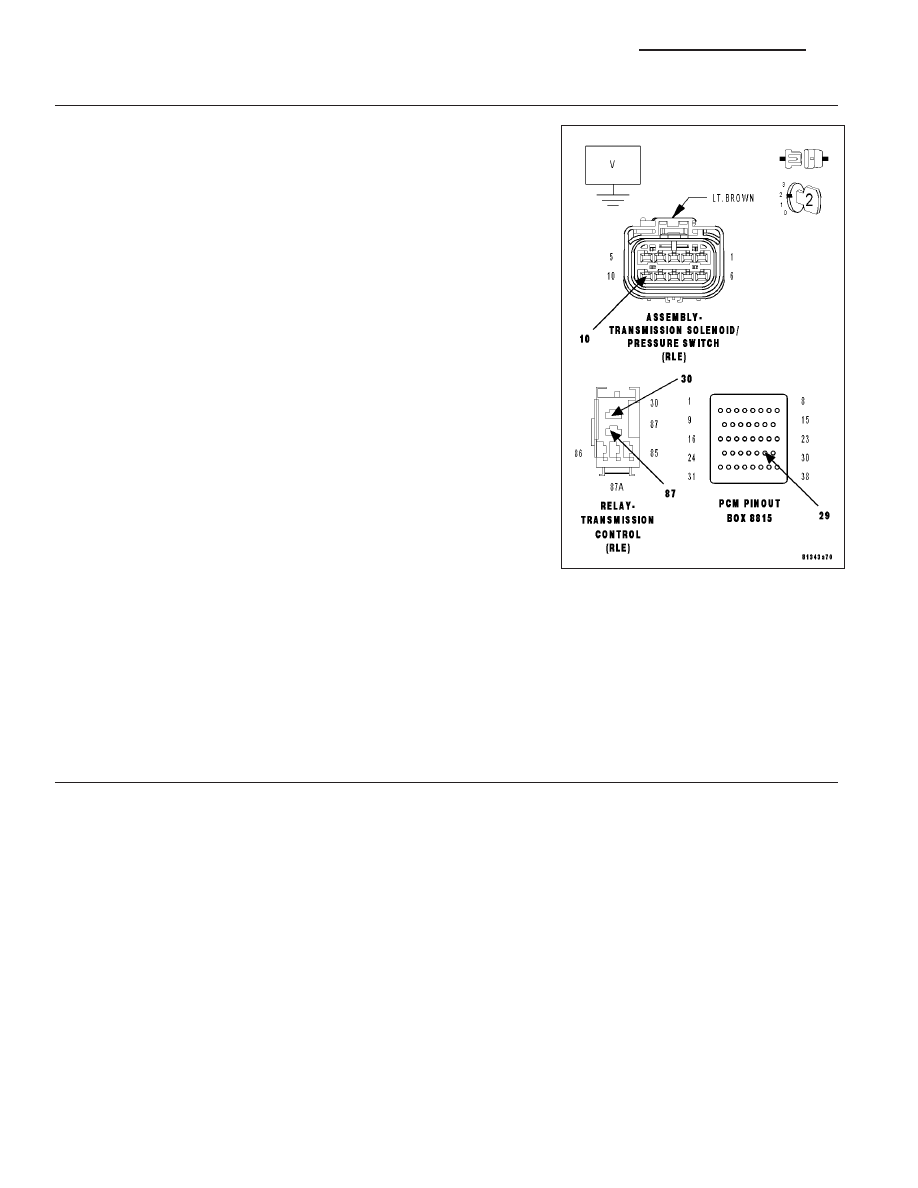Content .. 2016 2017 2018 2019 ..
Chrysler 300/300 Touring/300C, Dodge Magnum. Manual - part 2018

4.
(T50) L/R PRESSURE SWITCH SENSE CIRCUIT SHORT TO VOLTAGE
Turn the ignition off to the lock position.
Disconnect the PCM C4 harness connector.
Disconnect the Transmission Solenoid/Pressure Switch Assembly har-
ness connector.
Remove the Transmission Control Relay.
NOTE: Check connectors - Clean/repair as necessary.
Connect a jumper wire between the (Internal) Fused B+ circuit and
(T16) Transmission Control Relay Output circuit in the Transmission
Control Relay connector.
Ignition on, engine not running.
CAUTION: Do not probe the PCM harness connectors. Probing the
PCM harness connectors will damage the PCM terminals resulting
in poor terminal to pin connection. Install Miller Special Tool #8815
to perform diagnosis.
Measure the voltage of the (T50) L/R Pressure Switch Sense circuit.
Is the voltage above 0.5 volts?
Yes
>> Repair the (T50) L/R Pressure Switch Sense circuit for a
short to voltage.
Perform 42RLE TRANSMISSION VERIFICATION TEST -
VER 1. (Refer to 21 - TRANSMISSION/TRANSAXLE/AU-
TOMATIC - 42RLE - STANDARD PROCEDURE)
No
>> Using the schematics as a guide, check the Powertrain
Control Module (PCM) terminals for corrosion, damage, or
terminal push out. Pay particular attention to all power and
ground circuits. If no problems are found, replace the PCM
per the Service Information. With the scan tool PERFORM
QUICK LEARN, then program Pinion Factor in the Front
Control Module. (Refer to 8 - ELECTRICAL/ELECTRONIC
CONTROL MODULES/POWERTRAIN CONTROL MOD-
ULE - REMOVAL)
Perform 42RLE TRANSMISSION VERIFICATION TEST - VER 1. (Refer to 21 - TRANSMISSION/
TRANSAXLE/AUTOMATIC - 42RLE - STANDARD PROCEDURE)
5.
INTERMITTENT WIRING AND CONNECTORS
The conditions necessary to set the DTC are not present at this time.
Using the schematics as a guide, inspect the wiring and connectors specific to this circuit.
Wiggle the wiring and connectors while checking for shorted and open circuits.
With the scan tool, check the EATX DTC EVENT DATA to help identify the conditions in which the DTC was set.
Were there any problems found?
Yes
>> Repair as necessary.
Perform 42RLE TRANSMISSION VERIFICATION TEST - VER 1. (Refer to 21 - TRANSMISSION/
TRANSAXLE/AUTOMATIC - 42RLE - STANDARD PROCEDURE)
No
>> Test Complete.
21 - 606
AUTOMATIC TRANSMISSION 42RLE - ELECTRICAL DIAGNOSTICS
LX